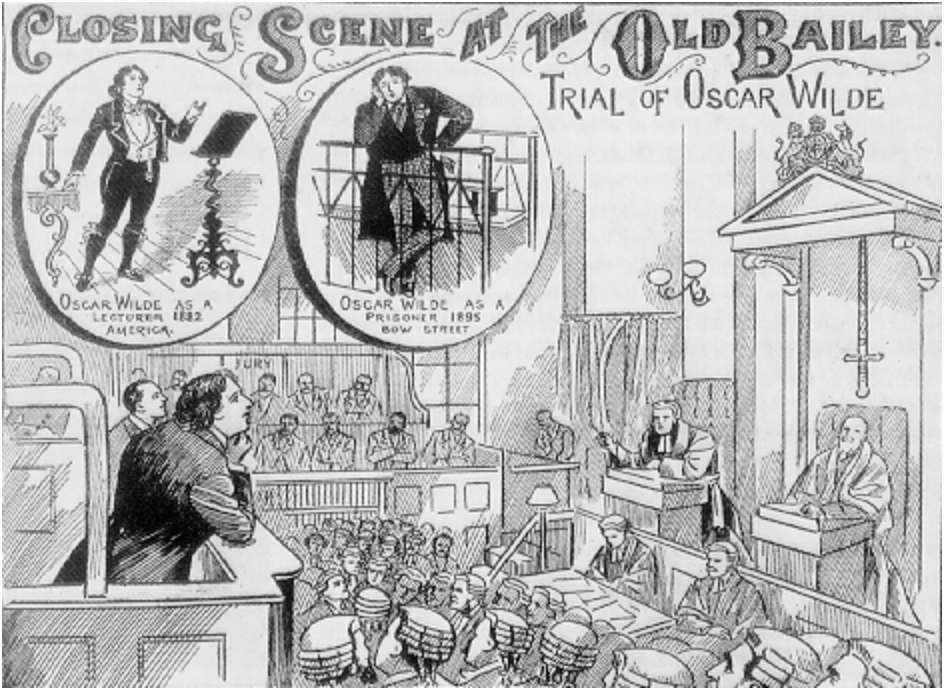Created by Nidhi Shekar on Fri, 10/09/2020 - 02:06
Description:
To say that Oscar WIlde liked to toe the line of societal expectation is an understatement and might do a disservice to the man himself. Known for his flamboyant dressing style, homoerotic themed work, and general lack of regard for societal norms, Oscar WIlde stood out from the masses, as evidenced by the life he lived. He championed the aesthetic movement, which had previously seen patrons like Dante Gabriel Rossetti, and was an advocate of the concept of art for art's sake. Unfortunately, he was not as open with other aspects of his life, and went to great lengths to hide his sexuality, even. getting married and fathering two children. The affair that led to his imprisonment and eventual death was the one he had with Lord Alfred Douglas, the son of the Marquess of Queensberry. Wilde ended up taking the Marquess to court for defamation, claiming that he had ruined his life. While the Marquess was pronounced not guilty, the trial prompted a second, only this time against Oscar Wilde.
The second trial (whose closing is pictured), consisted of twenty-five counts of gross indecencies and conspiracy to commit gross indecencies. Wilde was prosecuted alongside Alfred Taylor, who was accused of procuring boys for him. The trial once again dredged up the letters Wilde and Douglas wrote each other, and it is only through a miracle that Wilde’s words didn’t incriminate himself. After intense deliberation, they were unable to come to a decision and Wilde was released on bail. At that point, Wilde’s friends urged him to flee to France, because they had decriminalized homosexuality after the French revolution, but Wilde insisted on remaining in London. The piture depicts the closing scene of the second trial. Drawn and printed by Illustrated Police News, a popular tabloid that ran weekly editions until the 1930s. Intrestingly enough, the picture depicts two forms of Oscar Wilde, the professor and the prisoner. Eyewitness accounts of the second trial describe Wilde as being "subdued, and quiet", a direct contrast to all other accounts of him. It's also rather obvious that it's a tabloid. from the fact that only Wilde is pictured, an attempt to capitalize on the celebrity prisoner rather than his companion Taylor, who was accused of providing boys for him.
Sources
1. “The Trials of Oscar Wilde: An Account.” Famous Trials, famous-trials.com/wilde/327-home.
2. Bertram, Colin. “How Oscar Wilde's Libel Trial Backfired and Ruined His Life.” Biography.com, A&E Networks Television, 15 July 2020, www.biography.com/news/oscar-wilde-trials-downfall-gross-indecency.
3. History.com Editors. “Oscar Wilde Trial.” History.com, A&E Television Networks, 7 May 2018, www.history.com/topics/gay-rights/oscar-wilde-trial.
4. Pearce, Joseph. The Unmasking of Oscar Wilde. Ignatius Press, 2015.
5. Bristow, J. “The Blackmailer and the Sodomite: Oscar Wilde on Trial.” Feminist Theory, vol. 17, no. 1, 2015, pp. 41–62., doi:10.1177/1464700115620860.
Copyright:
Associated Place(s)
Part of Group:
Featured in Exhibit:
Artist:
- The Illustrated Police News


